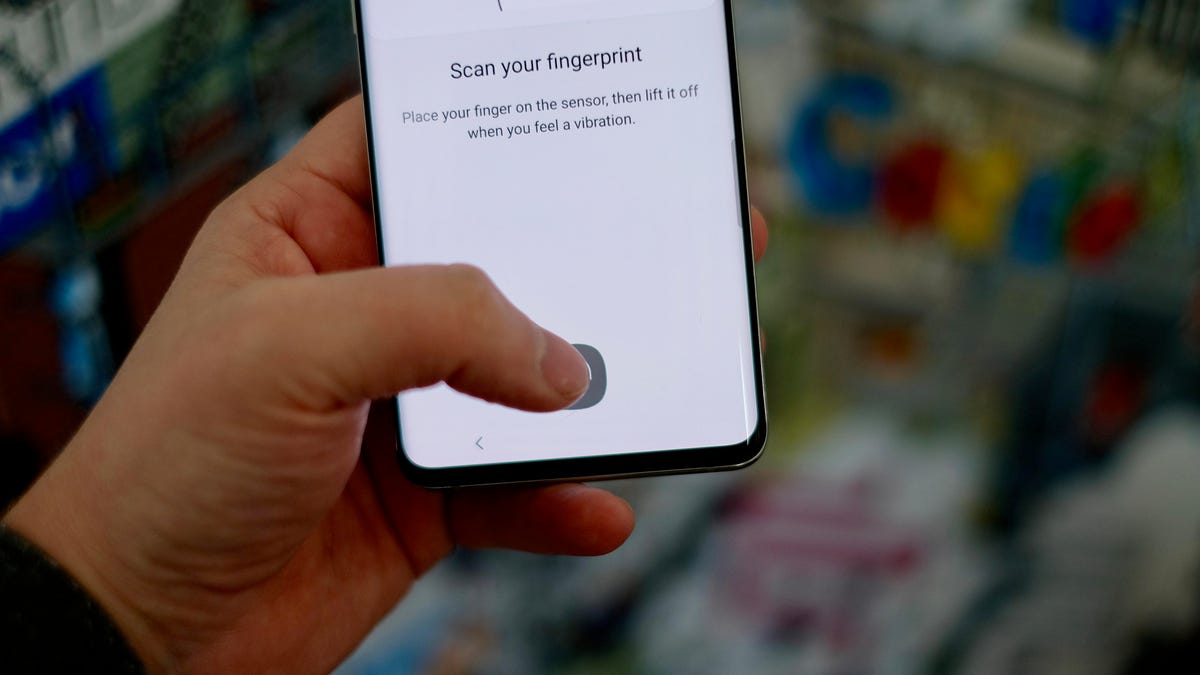Samsung Galaxy S21 could come with an improved Qualcomm fingerprint sensor
Qualcomm, which didn't name customers, on Monday said its second-generation 3D Sonic Sensor is faster and bigger.

Qualcomm has come out with an improved version of its fingerprint sensor technology. Older variants have been on Samsung flagship phones for the past two years.
The in-screen fingerprint sensor in Samsung's Galaxy S21 might be easier to use than ever. Qualcomm , a major supplier for Samsung, on Monday unveiled the second generation of its 3D Sonic Sensor that's faster and bigger, making it easier for people to to unlock their devices using their fingerprints.
While it didn't say Samsung's new phones will have the technology, the Galaxy S10, Note 10, S20 and Note 20 all used the first generation of Qualcomm's fingerprint sensor. Samsung will unveil its next Galaxy flagships on Thursday.
As phones get slimmer and sleeker, companies have been looking for ways to cram a bigger screen into a smaller package without carving out space for a fingerprint sensor. Apple largely has relied on its Face ID to unlock its latest devices instead of a physical fingerprint reader, while some Android phone makers have used things like iris sensors or fingerprint sensors on the back or sides of devices. Others have looked for ways to put the technology underneath the display itself.
In 2018, Qualcomm introduced its fingerprint sensor that used sound waves to map the ridges on your finger and unlock your phone. It declared it to be faster and more secure than face unlock technology from companies like Samsung and other fingerprint technology that uses optical sensors to essentially take a photo of a user's fingerprints. It can identify prints when a user's hands are wet and can scan fingerprints through solid surfaces like glass and metal.
Samsung jumped on board with Qualcomm's 3D Sonic Sensor and introduced it in the Galaxy S10 and Galaxy Note 10 lineups. It removed the fingerprint reader it had placed on the back of its devices and also ditched its iris scanner in favor of Qualcomm's technology. The ultrasonic fingerprint reader sat underneath the display, letting Samsung stretch the screens across the entire front of its devices.
The only problem was the first 3D Sonic Sensor didn't quite live up to its promise. Tech reviewers complained about the slow unlock speeds and difficulty they faced placing their finger on the exact right spot. Then a British woman discovered a flaw that let anyone's fingerprint unlock a Galaxy S10 smartphone. Samsung and Qualcomm worked together to issue a software update to patch that vulnerability.
But Qualcomm also moved to tweak its hardware. The company two months later introduced a new version of its fingerprint sensor, called the 3D Sonic Max. The 3D Sonic Max's fingerprint recognition area was 17 times larger than its predecessor, which meant a user didn't have to precisely place their finger over the small sensor to unlock a phone. And handset makers could implement authentication that required two fingers, something that made a device more secure. While the sensor was bigger, it wasn't faster than its predecessor when it came to unlocking a phone.
Qualcomm's new 3D Sonic Sensor Gen 2 addresses the speed problem. The new technology is 50% faster than the first generation, Qualcomm said in a blog post Monday.
And it's 77% larger: Gen 2 is 8 millimeters by 8mm, while the previous version was 4mm by 9 mm, Qualcomm said in a blog post. Along with making it easier to know where to place a finger, the larger size also allows the technology to collect 1.7-time more biometric data, speeding up the unlock time.
Qualcomm said its 3D Sonic Sensor Gen 2 is expected to debut in mobile devices early this year. That could be as soon as Samsung's Unpacked event on Thursday. Tune into CNET for full coverage from Samsung's event.

